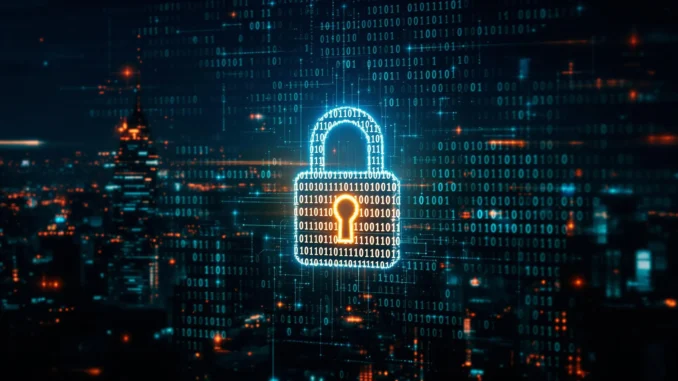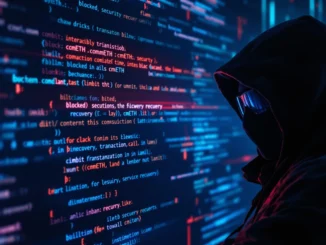
In a swift and decisive move highlighting the collaborative spirit within the cryptocurrency community, OKX exchange has taken a proactive step to bolster digital asset protection. Responding to a recent security incident affecting Bybit, a fellow cryptocurrency exchange, OKX has added the suspected hacker’s address to its internal blacklist. This urgent action, confirmed by OKX CEO Hong Fang, underscores the critical importance of crypto exchange security and the industry’s united front against malicious actors. Let’s delve into what this means for the crypto landscape and how exchanges are working tirelessly to safeguard your digital assets.
Why is Blacklisting Hacker Addresses Crucial for Crypto Exchange Security?
When news of a hack breaks, the immediate priority for exchanges isn’t just to contain the damage but also to prevent further illicit movement of stolen funds. This is where the practice of adding a blacklist address becomes indispensable. Think of it as a digital ‘no entry’ sign for specific crypto addresses associated with illicit activities.
Here’s a breakdown of why blacklisting is a vital security measure:
- Preventing Fund Laundering: Once an address is blacklisted by a major exchange like OKX, any attempt to deposit or withdraw funds from that address on their platform is immediately flagged and blocked. This significantly hinders the hacker’s ability to launder the stolen cryptocurrencies through the exchange.
- Industry-Wide Alert: While OKX’s blacklist is specific to their platform, it serves as an alert to the broader cryptocurrency ecosystem. Other exchanges and security firms can take note of this address and implement their own preventative measures, creating a network effect of security.
- Facilitating Asset Recovery: By monitoring blacklisted addresses, exchanges and blockchain analytics firms can track the flow of stolen funds. This tracking can be crucial for law enforcement agencies and asset recovery specialists in their efforts to retrieve the stolen digital assets and potentially identify the perpetrators.
- Demonstrating Proactive Security Posture: Publicly announcing the blacklisting action, as OKX CEO Hong Fang did, demonstrates a commitment to cryptocurrency security and user protection. This transparency builds trust within the community and encourages other exchanges to adopt similar proactive security measures.
In essence, blacklisting isn’t just a reactive measure; it’s a crucial component of a robust digital asset protection strategy within the crypto space. It sends a clear message to malicious actors that their actions will be met with swift and coordinated resistance.
Decoding the Bybit Hack and OKX’s Supportive Stance
While details of the ‘Bybit hack‘ are still emerging, the prompt response from OKX highlights the interconnectedness and collaborative nature of the leading cryptocurrency exchanges. Hong Fang’s statement on X wasn’t just about blacklisting an address; it also emphasized OKX’s offer of support to Bybit, extending both IT security expertise and liquidity assistance.
What does this offer of support signify?
- Industry Solidarity: In the face of cyber threats, exchanges recognize that they are all part of the same ecosystem. Supporting a competitor during a security incident isn’t just altruistic; it’s a strategic move to strengthen the overall resilience of the crypto industry. A vulnerability in one exchange can impact the perception and trust in the entire sector.
- Sharing Security Expertise: OKX offering IT security support suggests a willingness to share knowledge and best practices in cybersecurity. Cryptocurrency exchanges are constantly battling sophisticated cyber threats, and sharing threat intelligence and security strategies is crucial for collective defense.
- Liquidity Support: Offering liquidity support is a significant gesture. In the aftermath of a hack, an exchange might face temporary liquidity challenges due to fund movements or increased withdrawal requests. OKX’s offer to provide liquidity demonstrates a commitment to ensuring the stability of the market and Bybit’s operational continuity.
- Strengthening User Confidence: Such collaborative actions reassure users that exchanges are not isolated entities but are part of a larger, interconnected, and supportive network. This can help maintain and even strengthen user confidence in the cryptocurrency market as a whole, even in the face of security incidents.
This episode underscores that crypto exchange security is not just an individual exchange’s responsibility; it’s a shared endeavor. The willingness of OKX to assist Bybit reflects a maturing industry that is prioritizing collective security and user trust above all else.
Blacklist Address Monitoring: A Continuous Vigil in Crypto Security
Adding a blacklist address is not a one-time action; it’s the beginning of a continuous monitoring process. OKX engineers are reportedly closely monitoring the blacklisted address, ready to take “immediate action” if any funds are moved. What does this ongoing vigilance entail?
The continuous monitoring of blacklisted addresses involves:
- Real-time Transaction Tracking: Sophisticated blockchain analytics tools are used to track transactions associated with the blacklisted address in real-time. This allows exchanges to see if the hacker attempts to move funds to or through their platform.
- Automated Alert Systems: Exchanges set up automated alert systems that trigger notifications if any activity is detected involving the blacklisted address. This ensures a rapid response capability.
- Collaboration with Blockchain Analytics Firms: Exchanges often partner with specialized blockchain analytics firms that provide advanced tracking and forensic capabilities. These firms can offer deeper insights into the flow of funds and help identify potential laundering attempts.
- Adaptive Security Measures: Monitoring is not static. As hackers evolve their tactics, exchanges must adapt their monitoring strategies and security measures to stay ahead. This includes updating blacklists with new addresses, refining detection algorithms, and enhancing incident response protocols.
This constant vigilance is a cornerstone of modern cryptocurrency security. It’s a 24/7 operation that requires significant resources, expertise, and a proactive approach to stay one step ahead of cybercriminals. The promise of “immediate action” from OKX signifies this level of preparedness and commitment.
Beyond Blacklists: Comprehensive Digital Asset Protection Strategies
While blacklisting addresses is a crucial reactive and preventative measure, it’s just one layer in the multi-faceted approach to digital asset protection. What other strategies are essential for ensuring robust security in the cryptocurrency world?
A comprehensive security strategy for exchanges and users includes:
- Robust KYC and AML Procedures: Stringent Know Your Customer (KYC) and Anti-Money Laundering (AML) procedures are fundamental to preventing illicit activities on exchanges. These procedures help verify user identities and monitor transactions for suspicious patterns.
- Multi-Factor Authentication (MFA): For users, enabling MFA is a critical step to protect their accounts. MFA adds an extra layer of security beyond just a password, making it significantly harder for hackers to gain unauthorized access.
- Cold Storage of Funds: Exchanges typically store the majority of user funds in cold storage – offline wallets that are not connected to the internet. This drastically reduces the risk of online hacking.
- Regular Security Audits and Penetration Testing: Independent security audits and penetration testing by reputable firms help identify vulnerabilities in an exchange’s systems and infrastructure. Regular testing is essential to proactively address potential weaknesses.
- User Education and Awareness: Educating users about phishing scams, social engineering attacks, and best security practices is crucial. Users are often the weakest link in the security chain, and awareness programs can significantly reduce risks.
- Incident Response Plans: Having well-defined incident response plans in place is vital for quickly and effectively managing security breaches when they do occur. These plans should outline procedures for containment, investigation, recovery, and communication.
Cryptocurrency security is an ongoing arms race. Exchanges and users must continually adapt and enhance their security measures to stay ahead of increasingly sophisticated cyber threats. Blacklisting is a valuable tool, but it’s most effective when integrated into a broader, holistic security framework.
Securing the Future of Crypto: A Collaborative Imperative
The swift action by OKX to blacklist address associated with the Bybit hack, coupled with their offer of support, is a powerful demonstration of the cryptocurrency industry’s growing maturity and collaborative spirit. It underscores that digital asset protection is not a competitive advantage but a shared responsibility.
Moving forward, the crypto community must continue to prioritize:
- Information Sharing: Exchanges, security firms, and law enforcement agencies need to enhance information sharing regarding threats, vulnerabilities, and malicious actors.
- Standardization of Security Practices: Promoting and adopting industry-wide security standards can raise the baseline of security across the entire ecosystem.
- Technological Innovation in Security: Investing in and developing new security technologies, such as advanced threat detection systems and blockchain analytics tools, is crucial for staying ahead of evolving cyber threats.
- Regulatory Collaboration: Constructive dialogue and collaboration with regulators can help create a regulatory environment that fosters innovation while also ensuring adequate consumer protection and security standards.
The incident involving Bybit and the response from OKX serves as a timely reminder: crypto exchange security is paramount. By working together, sharing knowledge, and continuously innovating, the cryptocurrency industry can build a more secure and resilient future for digital assets, fostering greater trust and wider adoption.



